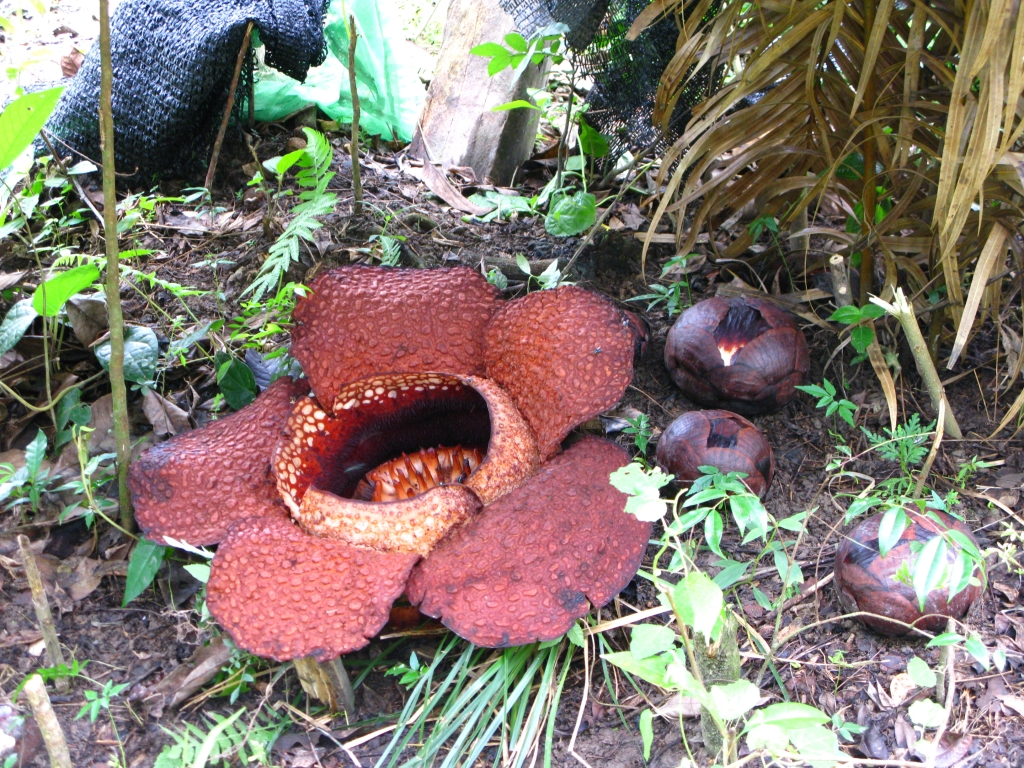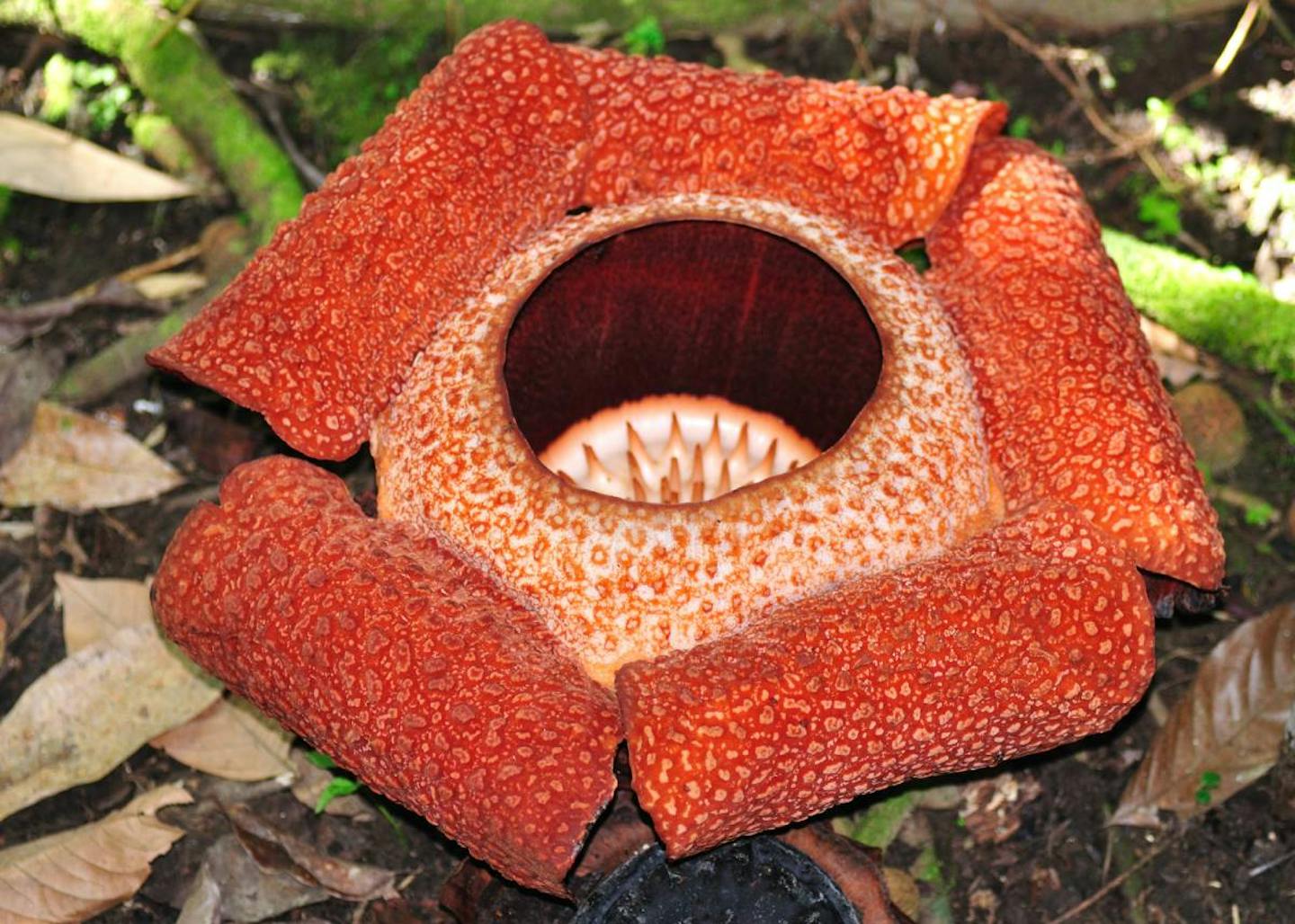Rafflesia: Known as the 'corpse flower' due to its offending smell
Each Wednesday, One Earth’s “Species of the Week” series highlights a relatively unknown and fascinating species to showcase the beauty, diversity, and remarkable characteristics of our shared planet Earth.
Like some prank of nature, the world’s biggest flower is also the smelliest. And, to the human nose, not in a good way: its gigantic petals emit a putrid scent to attract pollinators and prey.
Rafflesia is a genus of flower with 28 known species, the second largest of which is Rafflesia kerrii, found in the Tenasserim-South Thailand Semi-Evergreen Rainforests ecoregion, with blooms measuring 70 to 110 cm across, or over three feet. Only Rafflesia arnoldii of Sumatra, found in the Sumatran Montane Rainforests ecoregion, exceeds its dimensions slightly, becoming the largest single flower on Earth. Rafflesia is endemic in Malaysia, Thailand, Indonesia and the Philippines.

Known as the corpse flower due to its offending smell, Rafflesia is a parasite to the wild grapes of the vine genus Tetrastigma, which provides everything necessary for Rafflesia to survive. Rafflesia embeds strands of tissue into the vine’s host cells, absorbing nutrients and water and growing and growing until, erupting from the host vines is the only part of itself visible to the outside: enormous rubbery petals that stink like rotting flesh.
This process happens once a year, when Rafflesia grows to its maximum diameter with five leathery, red spotted petals around a bowl-like center that swallows flies and insects for further sustenance. Up to nine months elapse between the stages of seed to pod to flower, with the final monstrous display staying in bloom for only a few days. No one knows exactly when this process occurs. Some say after heavy rainfall, others say in July.

It’s no wonder that Rafflesia has been a source of curiosity for many people worldwide since the late 1700s, long-contributing to the ecotourism industry in Malaysia and Indonesia. The most famous population is found in Kao Sok National Park, Thailand.
Thriving in rainforests, Rafflesia is in danger of extinction due to habitat loss as well as poaching — its buds are harvested and sold for medicinal properties. The plant cannot grow in captivity, and, as most occurrences of Rafflesia contain only male or female flowers, pollinations is rare. A fly must land first on a male flower, avoid being eaten, and then transport the pollen to a female flower. If pollination does occur, the flower produces a smooth-skinned fruit, which is actually a berry about 5-inches in diameter. Fortunately, squirrels and birds enjoy this fruit, and are therefore able to help with seed dispersal.

.png?auto=compress%2Cformat&w=200)

